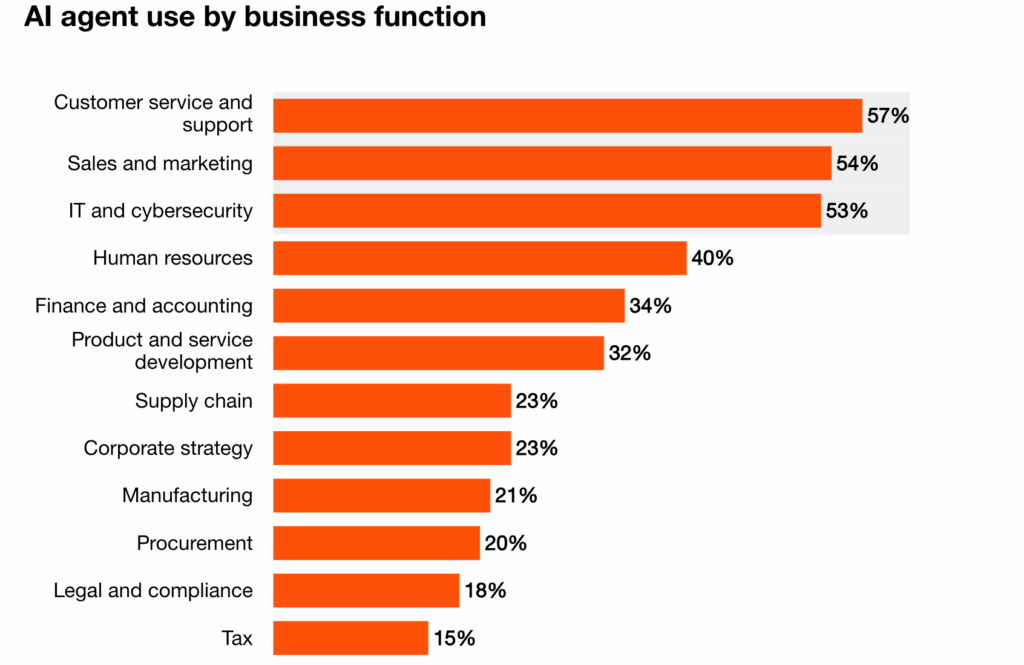Agents show promise, but widespread usage in the enterprise remains elusive

For many enterprises, agentic AI remains a lot of talk and not much action, which is ironic, given that agents are supposed to act on our behalf. Perhaps the problem is that we lack a clear, simple framework for understanding the different AI technologies. Liberty Mutual CIO Monica Caldas offered a cogent explanation on stage at the MIT Sloan CIO conference in May when she said, “Machine learning predicts, GenAI creates and agentic AI acts.”
Agents can undertake a series of activities on behalf of users, making their jobs easier or more efficient (or perhaps even replacing workers). There is a lot of optimism around the potential of agents, but so far companies are struggling to implement the technology at scale.
A PwC survey of 300 executives in May found: “Almost nine out of 10 executives surveyed (88%) say their companies plan to up their AI-related budgets this year due to agentic AI.” Yet, in spite of this optimism, 68% of respondents said that “half or fewer of their employees interact with agents in their everyday work.”
While 35% reported broad adoption, most companies are not using agentic AI at scale. PwC also found that 18% weren’t using agents at all—a state the report authors called completely lacking in vision.
So why all the optimism?
Even with adoption still limited, some leaders remain convinced the payoff will come in time. In a recent conversation with Box CEO Aaron Levie, he saw a bright future for agents, while admitting we were very early. “I think you can be both incredibly optimistic and excited about where this is going, while being pragmatic about the reality that it's going to be years and years of change management and deployment,” he said.
Levie added that when you look at where the tech is today, and you project that out a decade, it stands to reason that it’s only going to get increasingly capable. “I just think this is a common pattern, which is that those in the tech industry can quickly see the technology curve, and then you can extrapolate out what will happen. And so people building agents have already extrapolated out three, five, 10 years worth of acceleration of this technology,” he said.
Marc Benioff, whose company sells agentic technology, recently said that he was able to cut his customer service team by almost half by using AI agents, but it was unclear if other factors, like activist investor pressure to cut costs, played a role.
One thing is clear: customer service is a common early success story for agents. The PwC survey found that companies using agents were most likely to use them for customer service, sales and marketing and IT and cyber security functions. The surprising missing element from this chart would be coding.

Reasons for go-slow approach
There are a number of things holding back companies from implementing agents more widely. For starters, there is a lack of basic infrastructure for agents around identity, security, observability and communications. That is slowly beginning to change with the development of the MCP and Agent2Agent communications protocols and some other open source tools over the last year or so.
Yet there are still concerns around the lack of tooling to support the agents as they cross multiple systems, especially around security. While executives definitely see the potential, some like Workday CIO Rani Johnson, are choosing to be cautious as she implements agents in her company by limiting them to a single domain. Her use case example also involves customer service.
“We’ve launched agents to support our customer support teams. Each agent is tied to a single domain, and the assistant guiding them only has access to the sources in that domain,” Johnson told FastForward in a recent interview. “Access control is limited by design, since the agent can only respond from what it’s connected to. We haven’t yet been able to do what we call cross-domain because passing access control and identity across domains gets much more complex.”
While agents show great promise and companies see vast potential from the technology, most organizations are moving slowly and the evidence to this point doesn’t support the transformational predictions we’ve heard. That is all subject to change, of course, as the technology advances and more companies get involved to build out some of the missing infrastructure pieces, but for now, most enterprises are taking a more measured approach to agent deployment.
Image by Mohamed Hassan on Pixabay





